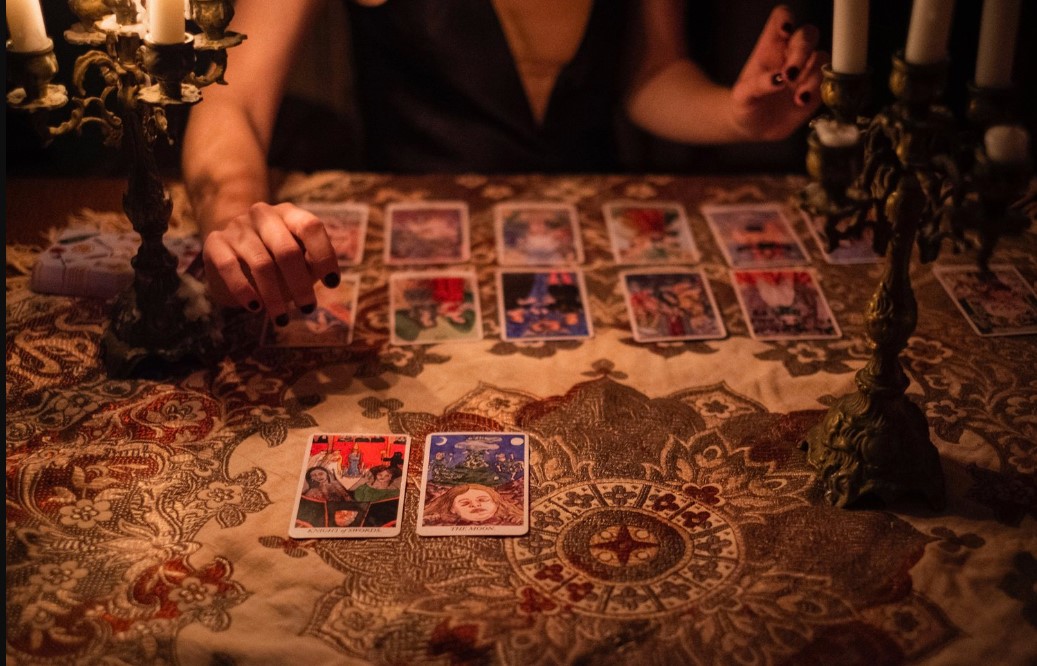Understanding Accurate Tarot Card Readings

The world of tarot cards has long captured the human imagination with
its enigmatic allure. For centuries, individuals have turned to these symbolic
cards to gain insights into their lives, relationships, and destinies. But what
truly defines an accurate tarot card reading? Is it merely a random shuffle and
interpretation, or is there something more profound at play?
In a world driven by logic and scientific inquiry, there exist pockets
of ancient mysticism that continue to captivate and intrigue the human spirit.
Among these, the art of tarot card reading stands as a beacon of mystery,
offering a portal to realms beyond the mundane. For centuries, individuals have
turned to these intricate decks of symbols and archetypes, seeking insights
into the tapestry of their lives, relationships, and destinies. But amidst the
allure and enigma, what truly defines an accurate tarot card reading? Is it an
intuitive exercise, a random shuffle of cards, or a glimpse into something
beyond our comprehension?
In this interesting blog, this renowned accurate tarot reader will take you on a journey to unravel the
essence of accurate tarot card readings — delving into their ancient origins,
the methodology that underpins them, and the key factors that contribute to
their uncanny precision.
A Glimpse into Tarot's Origins
The origins of tarot cards date back to the 15th century, with roots in
various European cultures. Initially, they were created as playing cards,
eventually evolving into tools for divination and self-discovery. 78 cards
standard tarot deck has two main categories: the Major Arcana and the Minor
Arcana. Each card carries its own symbolism, imagery, and energy, contributing
to the complexity and depth of tarot readings like love tarot reading.
Methodology Matters: The Reading Process
Accurate tarot card readings involve more than simply drawing cards and
interpreting their meanings. The process is a blend of intuition, symbolism,
and the reader's connection with their subconscious and the universe. Here's a
breakdown of the typical steps in a tarot reading:
Question Framing
The querent (the person seeking the reading) usually begins by framing
a specific question or intention. This question serves as the focal point for
the reading.
Shuffling and Drawing
The reader shuffles the deck while focusing on the question or
intention. Cards are then drawn and laid out in a spread, each position in the
spread having a particular significance.
Intuitive Interpretation
While the traditional meanings of the cards are important, accurate
readings are infused with the reader's intuitive insights. The reader combines
their knowledge of the cards with their gut feelings and impressions.
Storytelling
A skilled reader weaves a narrative that connects the cards, creating a
coherent story that addresses the querent's question or concern.
Symbolic Synthesis
Accurate tarot readings consider the relationships between cards,
patterns, and recurring symbols. These elements contribute to a holistic
understanding of the situation.
Factors Influencing Accuracy
Intuition and Connection
A reader's connection to their intuition and ability to tap into their
subconscious play a pivotal role in accurate readings. The more in tune a
reader is with their inner self, the clearer their insights will be.
Openness and Interpretation
Both the reader and the querent must approach the reading with an open
mind. Tarot cards offer guidance, not definitive answers. Interpretation is
key, as the symbolism can manifest in various ways.
Energy and Atmosphere
The atmosphere in which the reading takes place can impact accuracy. A
calm and focused environment allows for a deeper connection between the reader,
the cards, and the querent.
Ethical Practice
Readers, who approach their craft ethically, without bias or manipulation,
are more likely to provide accurate and beneficial insights.
The Limitations of Tarot Readings
It's important to acknowledge that while tarot readings can provide
valuable insights, they are not infallible. Predictions are not set in stone;
they reflect potential paths based on current energies and influences. The
future remains uncertain and can be influenced by personal choices and external
factors.
Summing Up
Accurate tarot card readings are a fusion of ancient symbolism,
intuition, and personal connection. A skilled reader navigates the intricate
web of cards, interpreting their meanings in the context of the querent's
question. The essence of tarot lies not in predicting an unalterable destiny,
but in offering guidance, self-reflection, and a deeper understanding of the
complexities of life. As we journey through the enigmatic world of tarot, may
we embrace its mysteries while honoring the power of human agency in shaping
our own paths.




